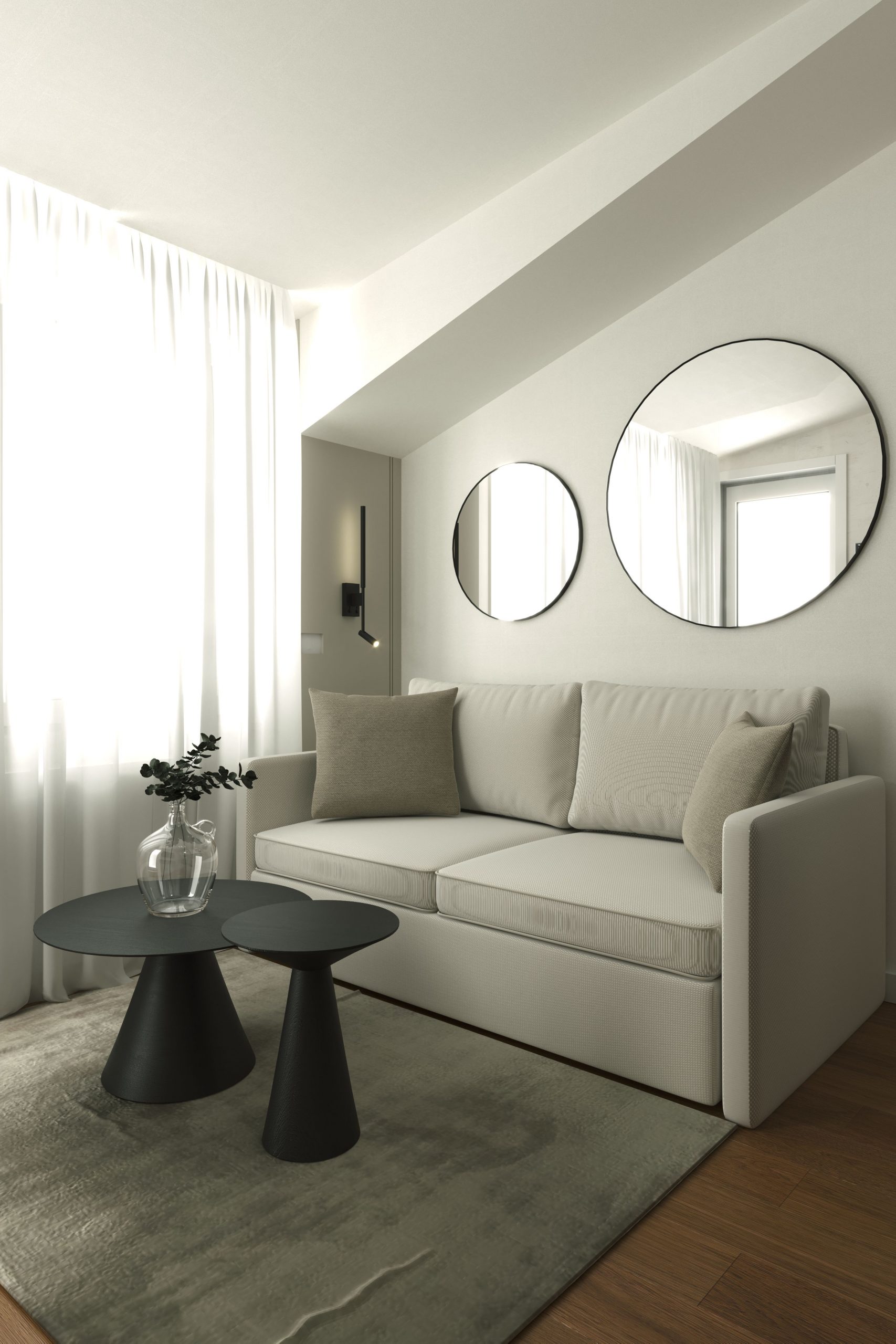Have you ever walked into a space and instantly felt a sense of peace, harmony, and warmth? Did your eyes instinctively follow clean lines, soft colors, and textures that you just wanted to touch? If so, you’ve likely experienced the Japandi style.
Don’t worry — here, you’ll find everything you need to know about this increasingly popular blend of Japanese minimalism and the Scandinavian hygge concept. From philosophy and practical tips to inspiring examples and local shopping recommendations.
- What Exactly Is Japandi Style?
- Historical Background and Style Philosophy
- Key Features of Japandi Interiors
- How to Recognize Japandi Style in a Space?
- Practical Guide to Creating a Japandi Home
- What to Do Once You Fall in Love With Japandi?
- Is Japandi the Right Style for You?
- Download Your PDF Japandi Interior Design Checklist!
What Is Japandi Style, Really?
Japandi style is a blend of Japanese minimalism and the Scandinavian hygge concept, combining functionality, simplicity, and warmth. At first glance, these two design philosophies may seem different, but they share core values: practicality, clarity of space, and a deep connection to nature.
In this blog, you’ll discover the origins of Japandi style, key characteristics of interiors designed in this spirit, practical steps for creating a Japandi atmosphere in your own home, and local recommendations for finding the perfect pieces to bring this transformation to life.
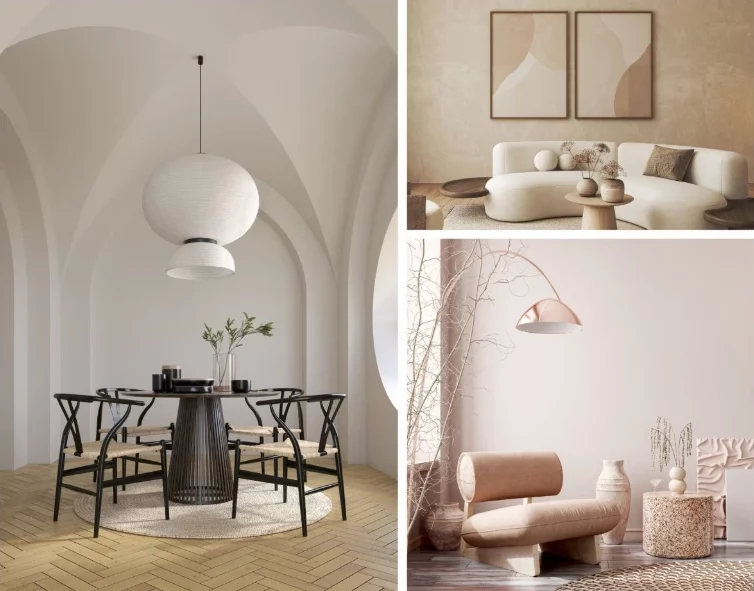
Historical Background and Style Philosophy
At its core, Japandi style is rooted in two key concepts — the Japanese *wabi-sabi* and the Scandinavian *hygge*.
Wabi-sabi: The Beauty of Imperfection
The Japanese aesthetic of wabi-sabi is a concept that celebrates the beauty of simplicity, imperfection, and the transience of all things. It means embracing objects with all their flaws, signs of aging, and natural changes as authentic and valuable, rather than hiding or fixing those imperfections.
In practice, this involves using natural materials—wood, stone, and ceramics—whose textures and marks of time become part of their beauty.
Because of this, the concept brings peace and harmony to a space by emphasizing modesty, handcrafted items, and a deep connection to nature.
The focus is on the idea that nothing is perfect, permanent, or completely finished; rather, beauty and meaning lie precisely in these qualities.
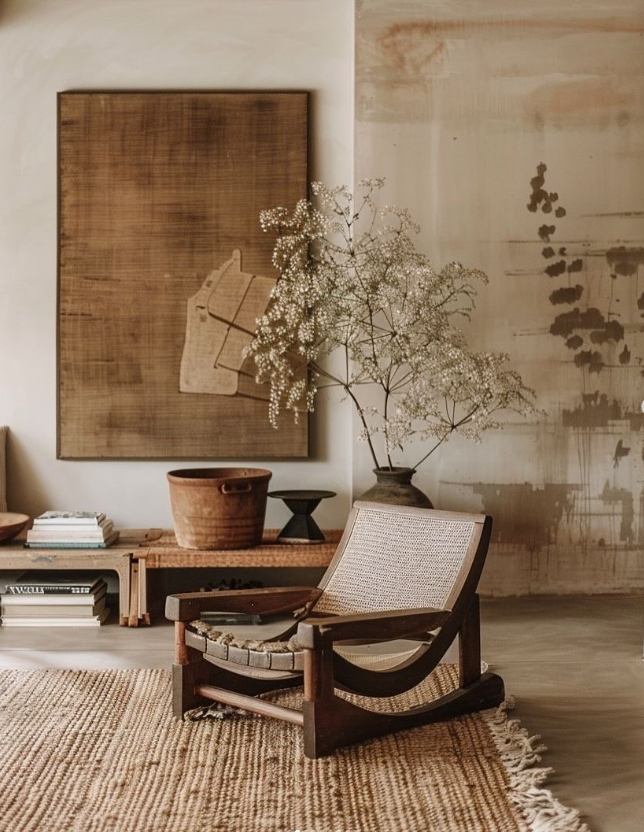
Hygge: Scandinavian Comfort
On the other hand, hygge is a Scandinavian concept that represents creating an atmosphere of coziness, warmth, and comfort. It focuses on enjoying simple everyday moments, often in the company of loved ones. It’s a way of life that encourages relaxation, security, and gratitude for the little things—like a warm blanket, the soft glow of candlelight, a hot drink, or sharing quiet, intimate moments at home.
By combining these two concepts, Japandi style was born—a design approach that perfectly balances warmth and simplicity.
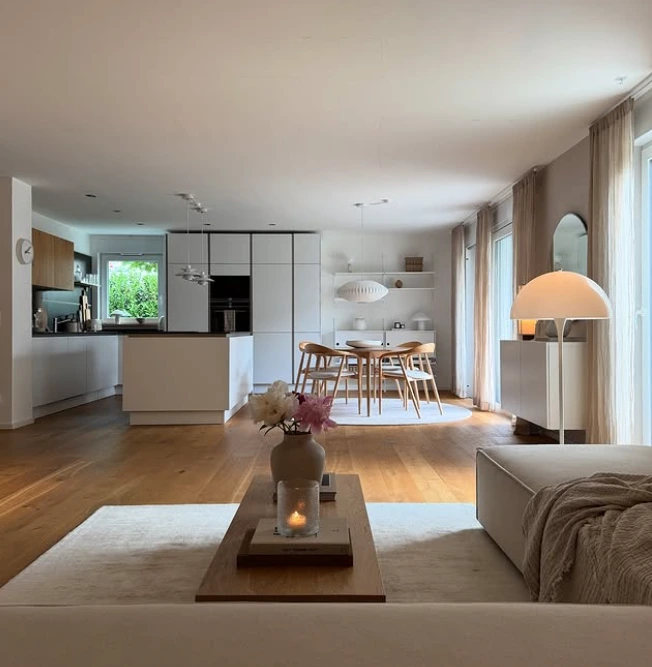
Key Characteristics of Japandi Interiors
Color Palette
Japandi interiors feature neutral, earthy tones such as cream-beige, olive green, gray, terracotta, and warm whites. These colors are chosen because they create a calming atmosphere and evoke a sense of connection to nature.
Materials in Japandi Interiors
Natural materials are used extensively, including oak or ash wood, bamboo, linen, cotton, and ceramics. These elements add warmth, texture, and natural beauty to the space.

Furniture in Japandi Style
In Japandi interiors, choose furniture with clean lines, low profiles, and multifunctional use.
Ideally, select pieces made of solid wood such as oak or walnut with a matte finish. This type of furniture fits perfectly in living rooms, bedrooms, and workspaces alike.
Decor Elements
Decoration is carefully curated with minimal details. For example, ikebana arrangements combining flowers, branches, and leaves into an artistic composition. These arrangements symbolize minimalism, achieving a strong visual impact with few elements. Handcrafted ceramic vases are also a desirable addition.
How to Recognize Japandi Style in a Space?
Japanese style uses darker, natural colors and symbolic minimalism, while Scandinavian style is warm and cozy. Japandi combines these into a neutral, earthy palette with carefully chosen decor.
| Element | Japanese Style | Scandinavian Style | Japandi Style |
|---|---|---|---|
| Colors | Darker, natural tones | Light, pastel tones | Neutral, earthy tones |
| Materials | Wood, ceramics, bamboo | Wood, cotton, wool | Natural, tactile materials |
| Furniture | Low, simple forms | Light forms | Simple, functional forms |
| Decor Elements | Minimal, symbolic | Warm, cozy | Carefully selected, limited |
Practical Guide to Creating a Japandi Home
Tips for Choosing the Right Colors
Start by creating a neutral base on the walls with warm white or cream tones. Then, add accents like textiles or smaller furniture pieces in colors such as olive green, gray, or terracotta.
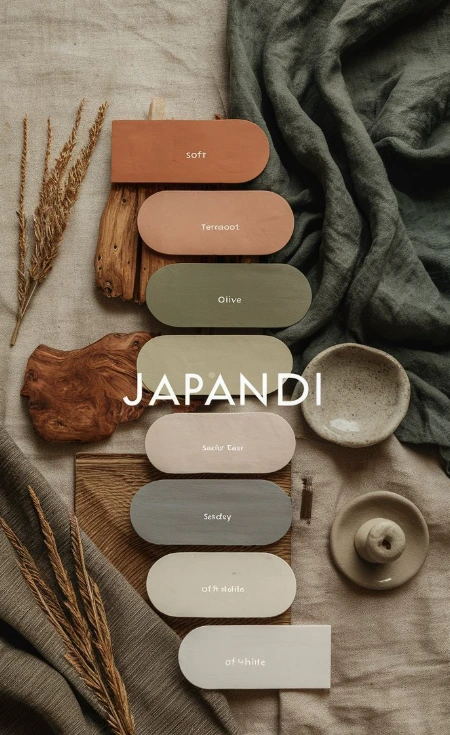
Kombinacija nameštaja i tekstura
Start with a central piece, such as a wooden table or a linen-upholstered sofa. Also, add details like handcrafted ceramic items, soft rugs in neutral colors, and plants.
Decoration and Plant Ideas
Plants like bonsai trees or ikebana arrangements are excellent choices. Place them in visible spots, but avoid overcrowding the space. Choose decor that has a clear purpose and aesthetic.
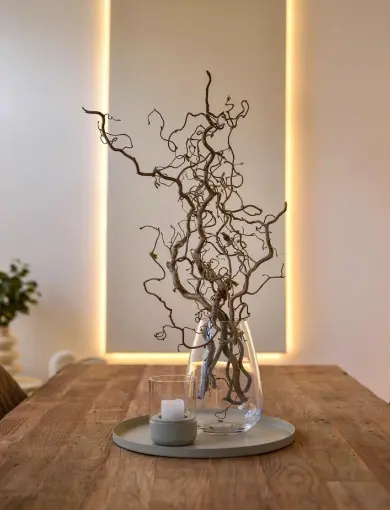

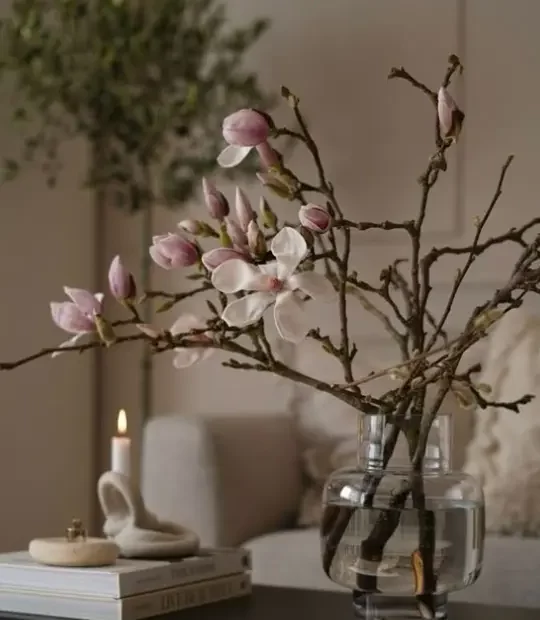
What to Do Once You Fall in Love With Japandi?
If Japandi style inspires you, we invite you to explore examples of our completed interiors in this spirit— na sajtu on our website or Instagram profile. You might find elements that perfectly match your sensibility. And when you’re ready to design your home with balance and purpose, we’re here to help.
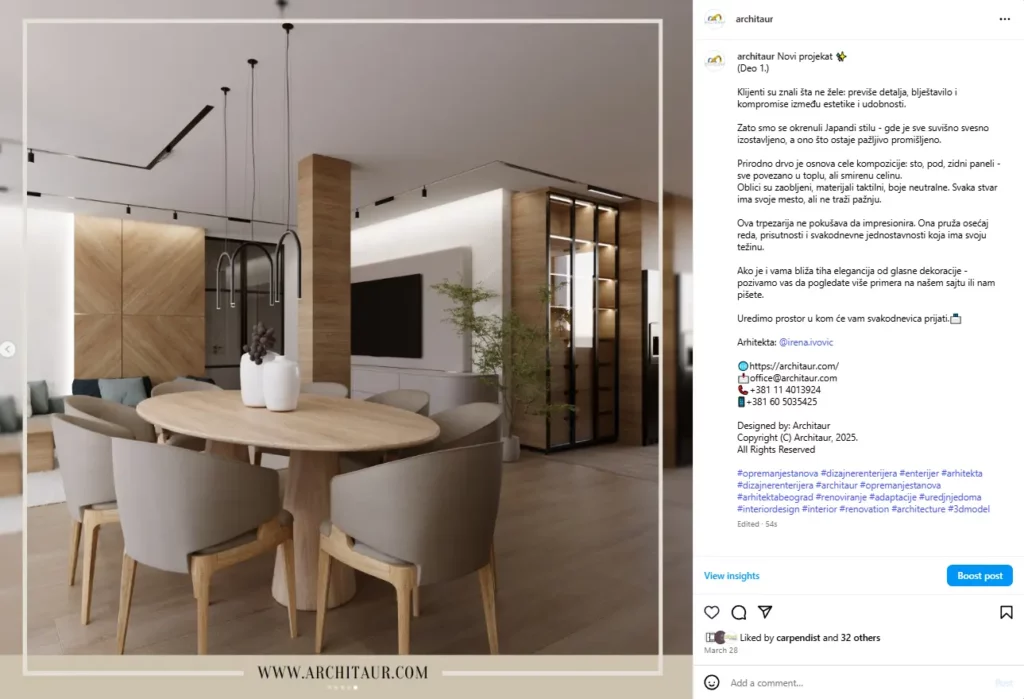
Where to Buy Japandi-Style Furniture
Affordable furniture pieces that follow the Japandi style can be found in Serbia at stores like JYSK or IKEA (such as the RISBYN pendant light,, NORDKISA open wardrobe, LINDBYN mirror, SOLLERUP kolekcija).
For handcrafted details, check out local pottery workshops or domestic designers like Midori, Woodsteel, Girstore, Artisan and Artisan (Belgrade).
Is Japandi Style Right for You?
Ultimately, Japandi is more than just a style — it’s a way of life.
Its uniqueness lies in the fusion of opposites: precision and gentleness, modern and traditional, functionality and warmth. This creates a space that achieves bothaesthetic and emotional balance, something few other styles combine so thoughtfully.
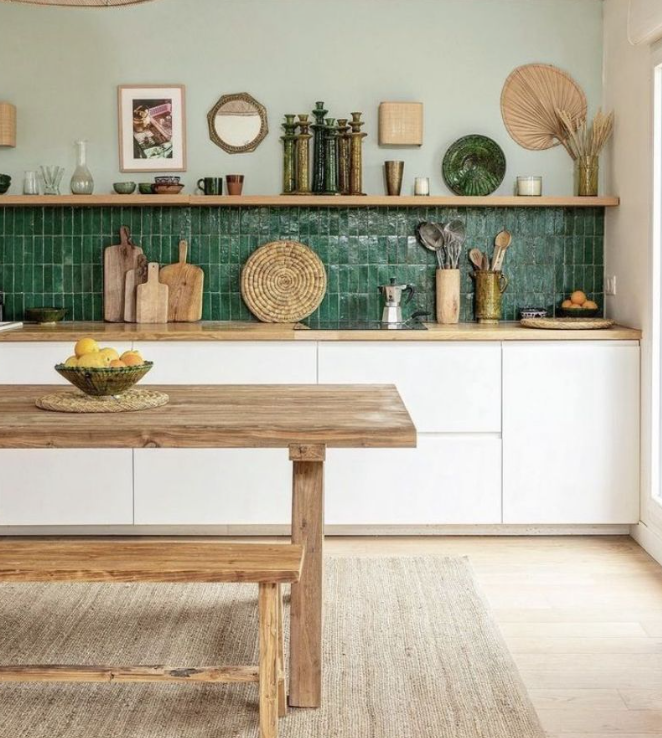
Are you wondering whether your taste and lifestyle perfectly align with the philosophy of Japandi minimalism? Take our short quiz and find out if you're a match for this blend of Japanese serenity and Nordic warmth!
Have fun, discover the answers, and let your home embrace a new, harmonious expression.
This might just be the path your interior has been waiting to take.
Is Japandi style the right choice for your home? by Irena PopovicDownload your PDF checklist for decorating a Japandi interior!
Do you want to create a functional and inspiring home step by step, in the spirit of Japandi philosophy? Download our PDF checklist(SRB) that will help you plan and carry out each phase of your interior design.
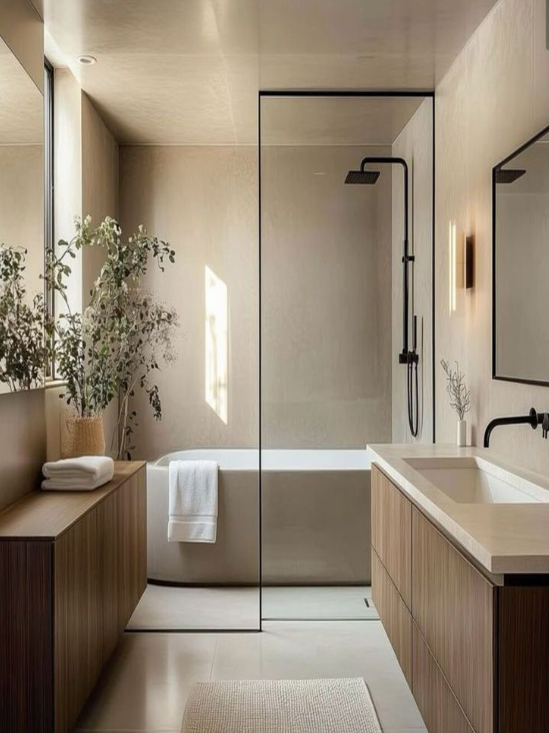
"Japandi style celebrates everyday beauty and a connection with nature, sharing a simplified aesthetic: geometric shapes, sophisticated colors, and a reverence for materials. It is a natural hybrid between two cultures that prioritize minimalism and tranquility." – Colin King


